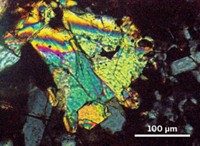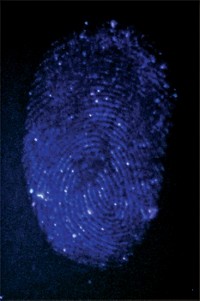Advertisement
Grab your lab coat. Let's get started
Welcome!
Welcome!
Create an account below to get 6 C&EN articles per month, receive newsletters and more - all free.
It seems this is your first time logging in online. Please enter the following information to continue.
As an ACS member you automatically get access to this site. All we need is few more details to create your reading experience.
Not you? Sign in with a different account.
Not you? Sign in with a different account.
ERROR 1
ERROR 1
ERROR 2
ERROR 2
ERROR 2
ERROR 2
ERROR 2
Password and Confirm password must match.
If you have an ACS member number, please enter it here so we can link this account to your membership. (optional)
ERROR 2
ACS values your privacy. By submitting your information, you are gaining access to C&EN and subscribing to our weekly newsletter. We use the information you provide to make your reading experience better, and we will never sell your data to third party members.
Education
Newscripts
An Equine Mystery: What Killed Phar Lap?
by Faith Hayden
May 31, 2010
| A version of this story appeared in
Volume 88, Issue 22

It's a mystery that dates back to the Great Depression. Australian "WONDER HORSE" PHAR LAP, one of the world's most successful racehorses, suddenly hemorrhaged to death during a trip to California in 1932.
What could have caused the greatest thoroughbred in the world to abruptly drop dead? Conspiracy theories abounded. Was it a fast-working infection? Possibly. Colic? Perhaps. But maybe there was something more malevolent at work. Something ... like murder.
If Phar Lap was indeed murdered, it wouldn't have been the first attempt on his life. Gangsters shot at the horse in an effort to eliminate him from competing in Australia's prestigious Melbourne Cup in 1930. But they missed their mark, and Phar Lap went on to win the race.
At the time of his demise two years later, autopsy results were inconclusive but showed that Phar Lap's stomach and intestines were inflamed, which fueled speculation that the thoroughbred was poisoned. No one could prove it, however, and Phar Lap's treasured hide was preserved and put on display at Museum Victoria, in Melbourne, Australia.
Phar Lap's untimely death would remain a mystery for nearly 80 years. But thanks to physics professor Ivan M. Kempson of Academia Sinica, in Taiwan, and a little modern-day chemistry, this cold case has finally been cracked (Angew. Chem. Int. Ed., DOI: 10.1002/anie.200906594).
Kempson, whose Ph.D. thesis was on hair analysis, got the idea to investigate Phar Lap's death during a conference dinner in 2003 "where, almost jokingly, someone said it would be interesting to apply my knowledge of hair analysis to studying Phar Lap's hair to see if he had been poisoned," he says.
"Phar Lap is effectively a sacred icon in Australia," he continues. The cause of his death "has been a topic of constant debate for decades," Kempson says. "It seemed like a great opportunity to apply my knowledge of hair analysis with modern-day scientific capabilities."
Kempson teamed up with Dermot A. Henry of Museum Victoria to procure some individual hair samples from Phar Lap's stuffed hide and to image them with a highly specialized X-ray microscope at the U.S. X-ray research facility Advanced Photon Source, in Chicago. "This microscope can image the actual chemical composition of minute samples down to trace levels," Kempson says. "With this, we could see arsenic in Phar Lap's hair."
That's right, arsenic. But how did it get there? Kempson and Henry speculated that the notoriously poisonous chemical element could have entered the horse's body during the taxidermy process. To eliminate that possibility, the researchers used X-ray fluorescence spectroscopy to compare the arsenic found in Phar Lap's hair with that found in hair of other preserved equine remains in museum displays. The samples didn't match.
The smoking gun in Phar Lap's case "wasn't that we saw arsenic, it was the physical distribution and the actual chemical form it existed in, distinctly different from that used in taxidermy," Kempson explains. "The distribution had a profile that followed what is expected from digestion and metabolism" of the chemical.
The researchers went on to further estimate that Phar Lap digested a large amount of arsenic within one day of his death.
Did the gangsters finally catch up with Phar Lap? Kempson and Henry will never be able to say for certain. But thanks to curiosity and a bit of science, they can say what he died from: arsenic poisoning.
Case closed—as much as it'll ever be.





Join the conversation
Contact the reporter
Submit a Letter to the Editor for publication
Engage with us on Twitter